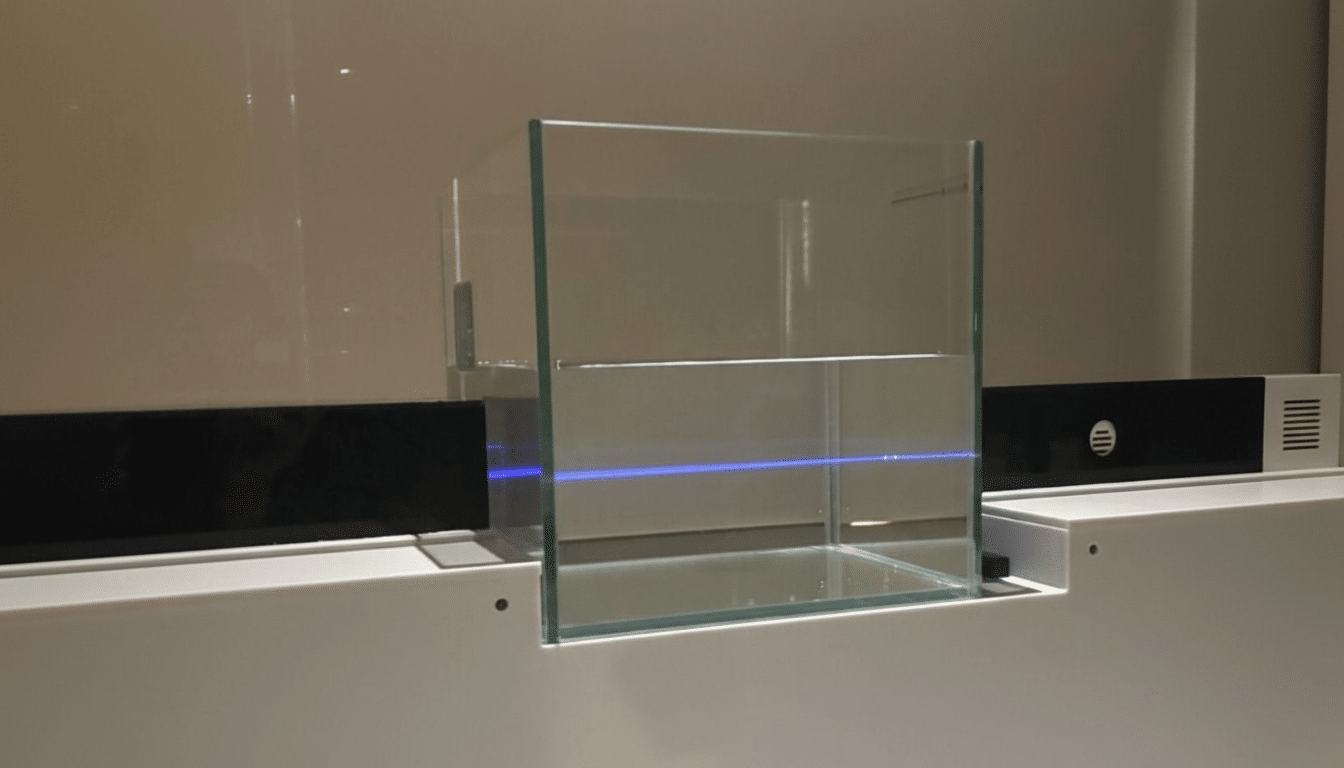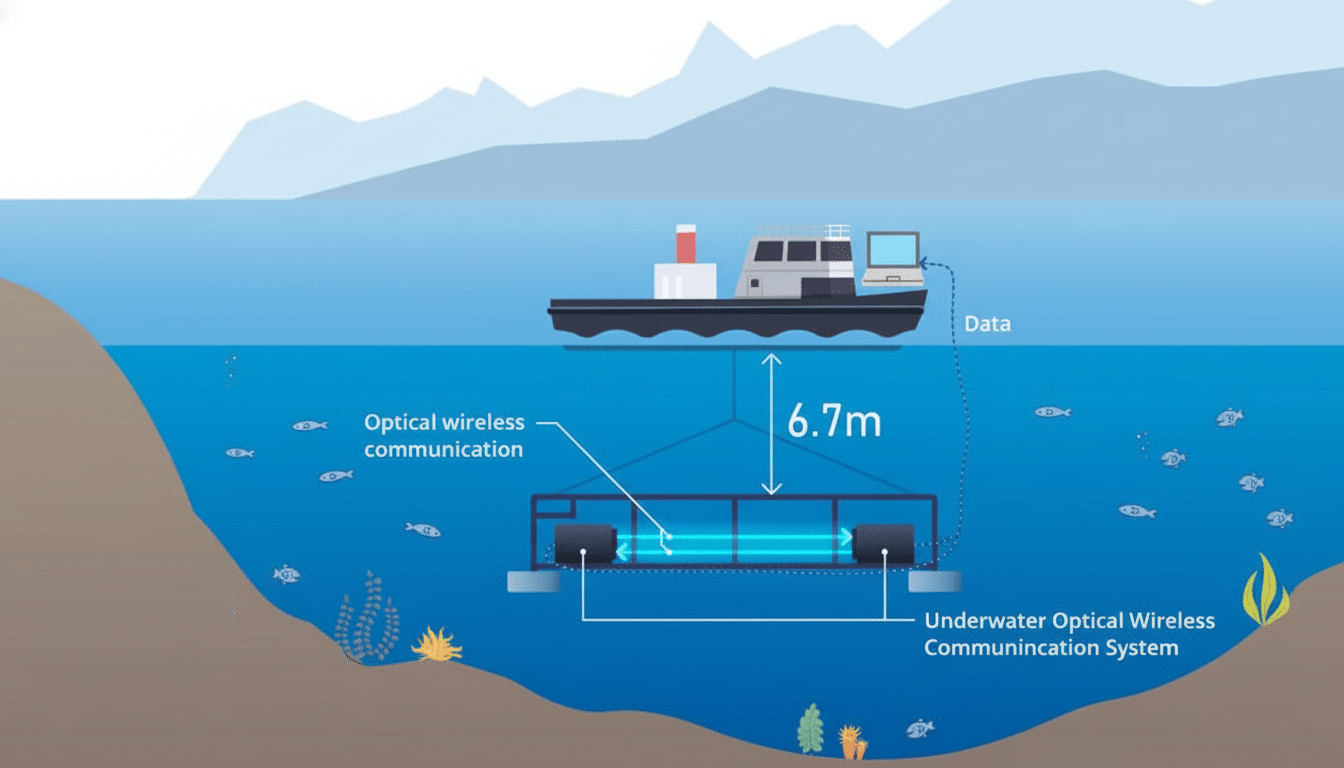Kyocera has developed an underwater wireless optical system that can send data through water at 5.2 Gbps — the fact it’s underwater should be challenge enough, but no—the environment adds nontrivial problems of tracking and attitude.
The breakthrough, which was made in clear water even though the end goal is to have real-time video, rapid sensor offload, and low-latency teleoperation of subsea robots untethered by fiber, emphasized how this new means of wireless underwater transmission can be used.

How the underwater laser link works to transmit data
Instead of sound, Kyocera transmits data through a tight beam of laser light in the water. The company claims that its bespoke laser supports wide-bandwidth signaling over distances of up to 100 m and offers 2.5x the equivalent capacity versus existing commercial underwater optical systems. In practice, that capability allows for high-definition video and bulk data communications over distances at which previous optical hardware would have faltered.
While Kyocera hasn’t specified its modulation stack, most top-tier optical systems use blue-green wavelengths (which travel further in water) paired with high-order modulation (like PAM or OFDM) and forward error correction to maintain gigabit-class rates. Precise control over the beam, and tight alignment at the receiver, reduces loss and keeps latency low—vital for tasks such as remotely piloted vehicles or coordinated swarms of underwater drones.
Why laser communications can trump acoustics underwater
Acoustic links are the workhorse of subsea communication, as they can travel kilometers—but are limited in bandwidth, and multipath distortion can take their toll. Specific numbers, taken from work the Woods Hole Oceanographic Institution has done on acoustical modems, and field reports by NATO’s Centre for Maritime Research and Experimentation, usually give rates in the kilobit to low-megabit range depending on distance and sea state. It’s all well and good for telemetry, but not if you’re streaming data or dumping lots of it.
Optical communication turns that trade-off on its head: now the range is short and line-of-sight is necessary to connect, but the data pipe is orders of magnitude fatter. That’s the void that Kyocera aims to fill — connecting short-to-medium-length subsea cables at speeds that operate more like fiber stretched across land than cable strung beneath the sea.
Field results and the constraints of real-world use
Lab conditions are forgiving. Once outside the tank, water becomes dirty—salt, turbidity, microbubbles, and plankton all degrade the potential for optical paths. Recently, in an offshore trial near Numazu City in Shizuoka Prefecture, Kyocera achieved 750 Mbps, a relatively robust number over coastal seawater where scattering and absorption spike. The discrepancy between lab and ocean performance comes as no surprise; research previously published in the IEEE Journal of Oceanic Engineering found that water clarity, particulates, and sunlight all factor into the achievable throughput and range.
This is a sense-through-wall (STW) approach; however, the line-of-sight (LOS) dependence may represent a challenge. A kelp frond can pass through and break the link; so too can surface waves that misalign their optics; moving platforms have to continually point, acquire, and track each other. More sophisticated systems employ gimbaled mounts, MEMS mirrors, and fast reacquisition algorithms to maintain the lock of the beams. A multi-hop mesh—consisting of multiple nodes to relay short optical spans—can extend the reach as well as reduce pointing complexity per hop.

What this underwater laser system could enable next
Gigabit-class links transform workflows for autonomous underwater vehicles and remotely operated vehicles. Inspectors might be able to stream HD video in real time back to surface vessels when checking pipelines, offshore wind farms, or port infrastructure. Ocean observatories could transfer high-rate sensor payloads—multibeam sonar mosaics, video, chemical analyses—without needing to wait for recovery. Aquaculture operators could maintain continuous surveillance of pens, and environmental scientists could rapidly synchronize distributed instruments across large scales, during short weather windows.
Defense stakeholders are also watching. The Office of Naval Research and related labs have been studying optical links to allow for low-latency coordination among unmanned systems. Faster communications also allows for tighter control loops, increased situational awareness, and the possibility to leave behind heavy fiber tethers in some circumstances. Even in locations where fiber is crucial, optical links may act as robust backups or fast local offload.
How it stacks up to the state of the art
Commercial optical systems, such as those from known subsea vendors, with modest ranges, have claimed tens of Mb to low hundreds of megabits. Laboratory research has shown gigabit bursts over short range in controlled environments. When combined with 750 Mbps in the ocean, it puts Kyocera’s work near the head of practical deployments, not just lab-bench prototypes.
There are still familiar hurdles to overcome:
- Power draw and vehicle endurance need to be reconciled
- Optics must be ruggedized against biofouling—think barnacles or sea growth on the lenses
- Interfaces standardized so optical links can plug into pre-existing subsea networks
- Eye safety for both divers and marine life
Work on optical wireless standards is moving forward within industry groups and considering that success here will enable implementation of some impressive demos as interoperable tools.
What to watch next for underwater optical links
Kyocera already has unveiled efforts to demonstrate the technology in actual use, and ultimately perfect it for practical applications spanning science, industry, and security. Look for stepwise wins: smarter beam steering that keeps up with moving platforms, adaptive modulation schemes that dial rates back when water conditions change, and hybrid stacks that fall back to acoustics if an optical approach is blocked.
If those pieces coalesce, subsea operators may soon be handling short-range underwater connectivity a lot more like an above-water high-speed LAN and a whole lot less like the compromised, low-bit-rate link it is today — yielding faster missions, richer data, and entirely new classes of autonomous collaboration undersea.

